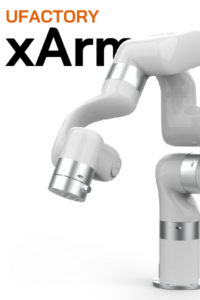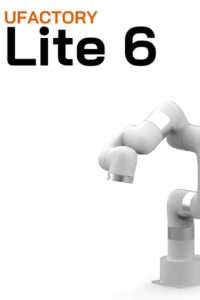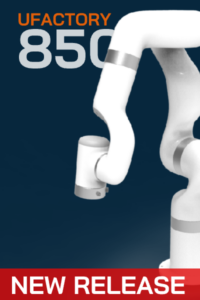Key Points
The collaborative robot (Cobot) market is projected to be valued at approximately $2.14 billion by 2025, with a potential compound annual growth rate (CAGR) of 31.6% through 2030.
Prices range from 10,000toover100,000, depending on factors such as payload, reach, and brand.
Choosing the right Cobot requires considering long-term costs and benefits, as well as performance and reliability, rather than just the initial price.
Future prices may continue to decline, with technological advancements and market competition potentially driving costs down further.
Market Overview
Collaborative robots (Cobots) are rapidly transforming manufacturing and other industries. Designed to work alongside humans, they enhance productivity, efficiency, and safety. By 2025, the market is expected to be valued at approximately $2.14 billion, with a potential CAGR of 31.6% through 2030 Grand View Research. This growth is primarily driven by rising labor costs, increasing demand for automation, and technological advancements.
Selection and Future Trends
Selecting the right Cobot involves evaluating specific needs, including task type, payload, and reach, while also considering the total cost of ownership (TCO), such as installation, training, and maintenance expenses. In the future, technological progress and market competition are likely to continue driving prices down, with an estimated annual price decline of 3-5% over the next five years Control Engineering.
Detailed Report
Collaborative robots (Cobots), also known as collaborative robots, are rapidly transforming manufacturing and other industries such as logistics and healthcare. Designed to work alongside humans, they enhance productivity, efficiency, and safety. With technological advancements and increasing market demand, Cobots are becoming more popular, but price remains a key factor in corporate purchasing decisions. This article aims to provide a comprehensive overview of Cobot price ranges, influencing factors, comparisons between different brands, and how to select the right robot for specific applications.
Price Range and Influencing Factors
Cobot prices range from a few thousand dollars to over $100,000, depending on several factors:
- Payload Capacity: As shown by ABI Research, Cobots with a payload of over 20 kg can cost more than twice as much as models with a payload of less than 5 kg.
- Reach: Longer reach increases the price to accommodate a larger working area.
- Precision and Repeatability: Higher precision and repeatability typically correspond to higher prices, suitable for applications requiring precise operations.
- Number of Axes: More axes allow for more complex movements, increasing the price.
- Brand Reputation: Brand reputation also contributes to product premium pricing.
- Additional Features: Features such as torque sensors and vision systems significantly increase costs. For example, Standard Bots mentions that basic 4-axis Cobots may cost around $8,000, but adding advanced features can drive up the price.
Price Categories
Hidden Costs and Total Cost of Ownership (TCO)
In addition to the initial purchase price, companies must consider the following hidden costs:
- Installation and Integration Costs: Integrating Cobots into existing production lines may require additional expenses, such as safety barriers or PLC systems.
- Training Costs: Operators and maintenance personnel require training, increasing initial investment.
- Maintenance and Support: Regular maintenance and technical support incur ongoing costs.
- Software Licensing and Upgrades: Robot software may require licensing fees and regular upgrades.
- Energy Consumption: Operating Cobots generates energy costs, which must be factored into long-term budgets.
These factors emphasize the importance of evaluating the total cost of ownership (TCO), rather than focusing solely on the initial price.
Comparison of Key Parameters and Differences Between Brands
| Product | Price | Payload | DOF | Reach | Repeatability | Weight |
| UFactory xArm6 | US$8,399 | 5 kg | 6-Axis | 700 mm | ±0.1 mm | 12.2 kg |
| UFactory 850 | US$8,999 | 5 kg | 6-Axis | 850 mm | ±0.02 mm | 20 kg |
| Universal Robot UR3e | US$26,000 | 3 kg | 6-Axis | 500 mm | ±0.1 mm | 11.2 kg |
| Universal Robot UR5e | US$31,000 | 5 kg | 6-Axis | 850 mm | ±0.1 mm | 20.6 kg |
| mron Techman Robot TM5-700 | US$25,000 | 6 kg | 6-Axis | 700 mm | ±0.05 mm | 22.1 kg |
| Omron Techman Robot TM5-900 | US$27,000 | 4 kg | 6-Axis | 900 mm | ±0.05 mm | 22.6 kg |
| Mitsubishi Melfa RV 1A |
US$22,000 | 1.5 kg | 7-Axis | 418 mm | ±0.02 mm | 19 kg |
| Mitsubishi RV-2AJ |
US$22,000 | 2 kg | 8-Axis | 410 mm | ±0.02 mm | 17 kg |
| Mitsubishi MELFA ASSISTA (RV-5AS-D) | US$34,000 | 5.5 kg | 9-Axis | 910 mm | ±0.03 mm | 32 kg |
| ABB IRB 14050-Single arm YuMi® | 500 g | 7-Axis | 559 mm | ±0.02mm | 9.5 kg | |
| ABB IRB 1010 | 1.5 kg | 6-Axis | 370 mm | ±0.01 mm | 13.5 kg | |
| ABB IRB 1090 | 3.5 kg | 6-Axis | 580 mm | ±0.05 mm | 21 kg | |
| ABB IRB 1100(4/0.475) | US$30,000 | 4 kg | 6-Axis | 475 mm,580 mm | ±0.01 mm | 21 kg |
| ABB Gofa CRB 15000 | US$34,000 | 5 kg | 6-Axis | 950 mm | ±0.05 mm | 28 kg |
| Amber B1 | US$15,000 | 3 kg | 7-Axis | 581 mm | ±0.05 mm | 8 kg |
| Aubo i3 | US$20,000 | 3kg | 6-Axis | 625 mm | ±0.05 mm | 16 kg |
| Aubo i5 | US$22,000 | 5 kg | 6-Axis | 886.5 mm | ±0.05 mm | 24 kg |
| Automata Eva | US$10,000 | 1.25 kg | 6-Axis | 600 mm | ±0.5 mm | 9.5 kg |
| Dobot Robot Arm CR3 | US$17,000 | 3 kg | 6-Axis | 620 mm | ±0.02 mm | 16.5 kg |
| Dobot Robot Arm CR5 | US$19,000 | 5 kg | 6-Axis | 900 mm | ±0.02 mm | 25 kg |
| Dobot Nova 5 | US$14,000 | 5 kg | 6-Axis | 850 mm | ±0.05 mm | 14 kg |
| Doosan Robotics A0509 | US$25,000 | 5 kg | 6-Axis | 900 mm | ±0.03 mm | 21 kg |
| Epson C4 Robot | US$20,000 | 4 kg | 6-Axis | 600 mm | ±0.02 mm | 27 kg |
| Fanuc CR-4iA | US$30,000 | 4 kg | 6-Axis | 550 mm | ±0.01 mm | 48 kg |
| Fanuc LR Mate 200iC | US$30,000 | 5 kg | 6-Axis | 704 mm | ±0.02 mm | 27 kg |
| Fanuc CRX 5iA cobot | US$30,000 | 5 kg | 6-Axis | 994 mm | ±0.03 mm | 25 kg |
| Hanwha HCR-3A | US$22,000 | 3 kg | 5-Axis | 630 mm | ±0.05 mm | 13 kg |
| Hanwha HCR-5A | US$26,000 | 5 kg | 6-Axis | 915 mm | ±0.05 mm | 21 kg |
| Jaka Zu 3 | US$18,000 | 3 kg | 6-Axis | 626 mm | ±0.02 mm | 12 kg |
| Jaka Zu 5 | US$20,000 | 5 kg | 6-Axis | 954 mm | ±0.02 mm | 23 kg |
| Kinova Gen3 | US$30,000 | 4 kg | 6-Axis | 891 mm | ±0.15 mm | 7.2 kg |
| Kinova Gen3Lite | US$30,000 | 0.5 kg | 6-Axis | 760 mm | ±0.15 mm | 5.4 kg |
| KUKA AGILUS KR 3 R540 | US$30,000 | 3 kg | 6-Axis | 541 mm | ±0.02 mm | 26 kg |
| KUKA LBR iisy 3 R760 | US$30,000 | 3 kg | 6-Axis | 760 mm | ±0.1 mm | 22.8 kg |
| KUKA KR 4 AGILUS | US$30,000 | 4 kg | 6-Axis | 601 mm | ±0.1 mm | 27 kg |
In-Depth Analysis of Differences
- Precision and Rigidity:
- KUKA/UR: Industrial-grade precision (±0.01–0.03 mm), suitable for high-precision scenarios like microelectronics assembly, but with heavier weight (18–30 kg), limiting deployment flexibility.
- UFACTORY: ±0.1 mm precision meets most light industrial needs (e.g., material handling, inspection), with an ultra-lightweight body of 12.5 kg, allowing integration into mobile robots or confined workspaces.
- Force Control Technology:
- International Brands: UR/KUKA force control modules require expensive add-ons or lock advanced features, increasing hidden costs.
- UFACTORY: Open SDK supports custom force control algorithms, enabling low-cost integration of tactile sensors or visual feedback, ideal for research and customized scenarios.
- Programming Complexity:
- Fanuc/ABB: Reliance on professional engineers makes it difficult for SMEs to adopt.
- UFACTORY: Blockly graphical programming + Python API allows students to deploy basic tasks within 30 minutes.
- Maintenance Costs:
- UR/Fanuc: Annual maintenance costs of 3,000–5,000, with software upgrades costing $2,000+ per instance.
- UFACTORY: 1-year warranty, with a focus on resolving customer issues.
- Training Costs:
- International Brands: Certification courses cost 2,000–5,000 per person, with team training costs exceeding $10k for SMEs.
- UFACTORY: Open-source community provides free tutorials and developer forums, reducing training expenses by 90%.
- Return on Investment (ROI) Calculation:
Assuming 8 hours of daily operation:- UFACTORY xArm 6: Payback period of 10–12 months (assuming replacement of 2 workers with a monthly cost of $3,000).
- UR5e: Payback period of 24–30 months, posing significant pressure on SMEs with tight cash flow.
- Real User Reviews:
- UR5e User (Auto Parts Manufacturer): “Stable performance, but the配件绑定策略导致后期成本失控,中小企业难以承受.”
- UFACTORY xArm 6 User (Education Lab): “The open ecosystem allowed us to quickly integrate AI vision algorithms, with overall costs being just 1/4 of UR’s solution!”
- KUKA LBR iiwa User (Aerospace Manufacturing): “Force control precision is impeccable, but the price and complexity are only suitable for large enterprises.”
Four Core Values of Choosing UFACTORY
- Cost Revolution: Total costs are only 1/3 of international brands, with minimal investment risk.
- Ultra-Lightweight Design: Weight <15 kg, supporting desktop, AGV integration, and space-sensitive scenarios.
- Open Ecosystem: Seamless compatibility with ROS, OpenCV, and TensorFlow, breaking vendor lock-in.
- Zero-Threshold Development: From graphical Blockly to advanced Python, catering to all user levels from students to engineers.
- Agile Service: Online ticketing + open-source community, improving issue resolution efficiency by 60%.
- Comprehensive Application Coverage: Education, healthcare, retail, light industry—one arm adapts to multiple fields.


